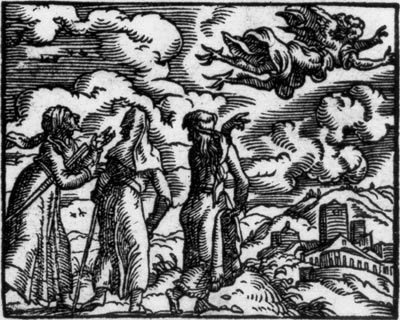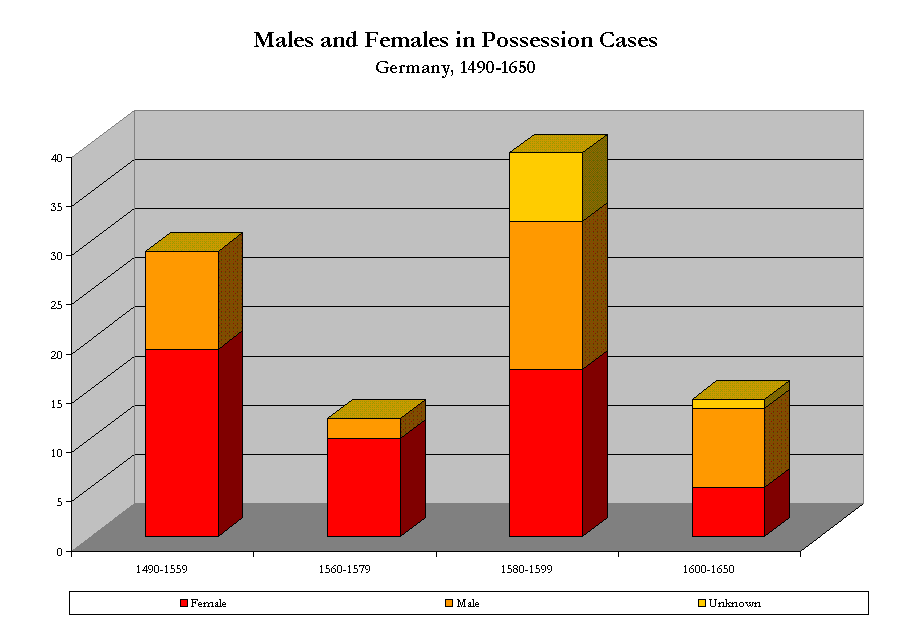
Power and Belief, 1300-1750
 |
Witches in Europe:
Power and Belief, 1300-1750 |
Gender and Possession
Cases of possession in early modern Europe appear by most accounts to have followed a gender pattern nearly identical to cases of witchcraft: the majority, usually the vast majority, of possessed persons were women. But there are significant differences as well. For one, the preponderance of possession cases involved young women and girls at the age of menarche. This in turn has prompted several historians, among them Moshe Sluhovsky, to argue that possession was in part the expression of the culture roles and psychology of female adolescents: on the one hand, possessed young women functioned as prophets, communicating messages that could not otherwise be articulated explicitly. By enabling them to speak with displaced male authority, possession also gave young women power that was otherwise closed off to them. Finally, imagery of sexual pollution in the words of possessed women suggests that their condition allowed possessed women to project "their unvoiced sexual anxieties" and equate "their personal notions of sexual impurity with parallel familial and/or communal dangers."
This analysis depends on a clear distinction between possession and witchcraft, but as H.C. Erik Midelfort has shown, that boundary was often blurry. To make his case, Midelfort analyzed a number of possession cases in Germany diachronically according to gender. Broken down into four periods, the gender distribution among these possessed folk shifts and turns quite dramatically:

The phase between 1560 and 1579 matches our expectations from demonological
literature of the time: that victims of demonic possession would in most
cases be female. But after 1580--a period when the number of witchcraft
prosecutions was rising dramatically--the gender distribution evens out.
After 1600, the new pattern continues (though among fewer cases in the
sample). These deviations from the expectations of demonology show that
learned elites were in no position to determine exact the shape that possession
would take: whereas Luther and other reformers thought of possession as
punishment for sin and cast the Devil in his oldest role as God's executioner,
the common expectations were a good deal more variable. Typically, possessed
young women were chaste and pious, not sinful; in other instances, the
distinction between possession and malefic witchcraft is not at all clear.
The prophetic role that many possessed women adopted was also difficult
to reconcile with learned conceptions of demonic possession: as with Sluhovsky's
examples from Picardy, the possessed women of Germany functioned as heralds
of religious revival. Finally, Midelfort notes geographical distinctions
in the pattern of possession. Possession cases seem to have been clustered
in overwhelmingly Protestant northern Germany, in contrast to the Catholic
lands of the south, Austria and Bavaria. This, in turn, may reflect stronger
pressure to resist the temptations of sin and to live an "ever more perfect
life." Midelfort concludes:
When we speak of popular ideas of the Devil, we cannot mean only those ideas that literate, educated people did not share. By the late sixteenth century, the German people generally believed that demon possession was on the rise, and they may even have taken this rise as a sign of the imminent end of the world. But while accepting this learned interpretation of what they saw around them, ordinary people also knew how to shape the idiom of possession to their own ends.